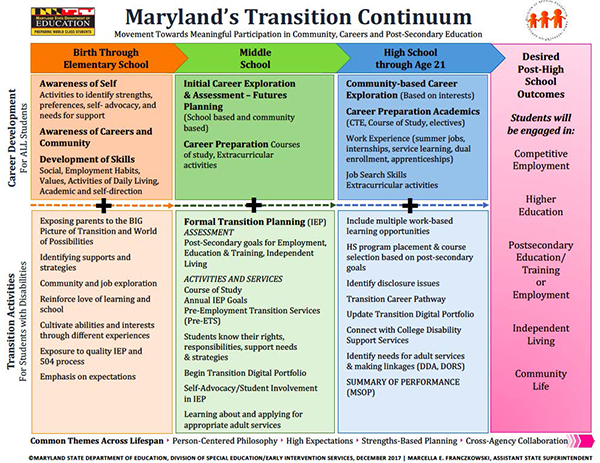Transition Planning Process
Transition Information
Transition planning is ongoing, outcome-oriented, and based on collaboration between students with disabilities, their families, school, adult service personnel, and the community.
Successful transition to a variety of postsecondary options s achieved through a continuum of instructional strategies, collaborative interdisciplinary team supports, use of technology and awareness of and access to community resources, and is a critical part of a student's Individualized Education Program (IEP) process in the middle and high school years.
Transition Planning Process
Transition planning for a student’s future begins as early as elementary school with career awareness and exploration activities. In Maryland, formal transition planning begins through the IEP process the year the student turns 14 and drives the development of the IEP. Students, with support from parents and educators, identify postsecondary goals in the areas of employment, postsecondary education or employment training; and if appropriate, independent living.
The transition planning process includes:
- Identifying and applying to the appropriate adult service agencies
- Gathering documents needed for future colleges, employers, or service providers
- Determining the training transition activities and supports needed to reasonably enable the student to reach these goals.

